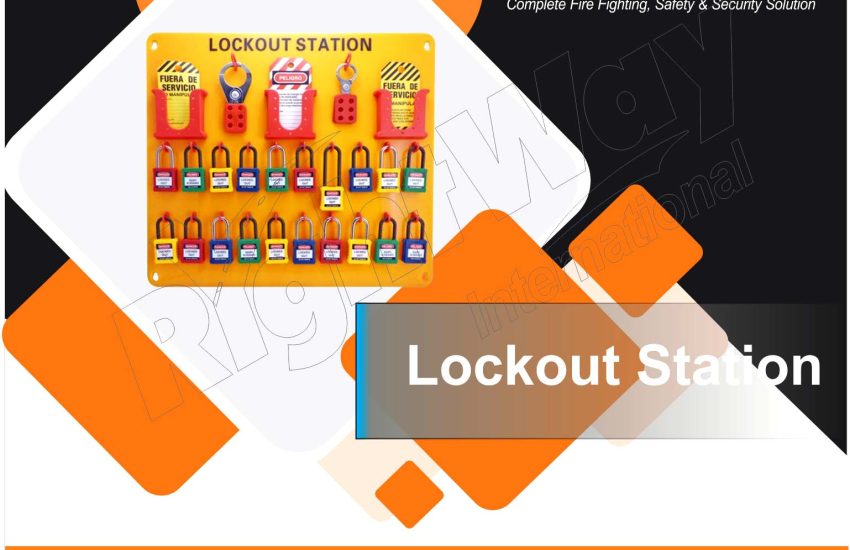Lockout stations play a vital role in workplace safety. They provide a centralized and organized location for storing lockout/tagout (LOTO) devices, tags, and keys. As a result, workers can implement lockout procedures more efficiently, reducing the risk of injury or equipment damage.
1. Purpose and Importance of Lockout Stations
Centralized Access to Safety Equipment
Lockout stations offer a single, visible place to store essential LOTO equipment. By keeping everything in one spot, teams can quickly access what they need during repairs or maintenance.
Support for Regulatory Compliance
Many safety agencies, such as OSHA, require clear and consistent lockout/tagout practices. A well-equipped lockout station helps ensure that employees follow those procedures, reducing the risk of violations.
Improved Workplace Safety
When tools are organized and easy to find, workers are far more likely to use them correctly. Consequently, lockout stations help prevent accidental startups and protect workers from hazardous energy.
Faster Maintenance Response
Rather than wasting time searching for tools, teams can go straight to the lockout station. This streamlined access saves time and keeps critical systems offline for shorter periods.
2. Types of Lockout Stations
Wall-Mounted Stations
Mounted directly to walls, these stations include compartments, hooks, or labeled panels for organized storage. They work best in areas with frequent maintenance needs.
Free-Standing Stations
These larger units stand independently and provide extra space for storing a wide range of devices. They’re especially useful in industrial environments where multiple teams share equipment.
Portable Stations
With built-in handles or wheels, portable stations allow teams to bring LOTO tools directly to the worksite. This mobility is ideal for large facilities or construction zones.
Customizable Stations
Some facilities require unique configurations. Customizable lockout stations allow you to add color-coded sections, extra compartments, or labels to suit your team’s specific workflow.
Lockout Station Kits
These compact kits contain all the basic tools—padlocks, tags, and hasps—in a single carry case. They’re useful for small operations or as backups for larger stations.
3. Benefits of Lockout Stations
Better Organization
Lockout station prevent equipment from being misplaced or damaged. Since each tool has a specific spot, teams stay organized and waste less time.
Enhanced Compliance
With a clear system in place, it’s easier to train workers on proper lockout procedures. This consistency helps meet compliance standards and reduces the likelihood of safety audits failing.
Improved Safety
Accidents often happen when tools are missing or improperly used. A stocked and visible station ensures workers always have access to the correct safety devices.
Time Savings
By reducing the need to gather tools from multiple areas, lockout stations cut down on maintenance delays. As a result, systems return to service more quickly.
Durability
Manufactured from tough materials like steel or high-impact plastic, most lockout stations can withstand harsh industrial conditions. Their design ensures long-term reliability.
4. Where Lockout Stations Are Used
Industrial Facilities
These environments require lockout stations to support the safe shutdown of machinery, electrical panels, and mechanical systems during maintenance.
Manufacturing Plants
With complex production lines and automated systems, manufacturing sites rely on lockout stations to keep workers safe during equipment servicing.
Construction Sites
Because conditions change frequently, portable lockout station provide essential flexibility. Workers can move safety gear as needed across the job site.
Commercial Buildings
HVAC units, elevators, and electrical systems require regular maintenance. Lockout station keep these areas safe for technicians in office complexes, malls, and hospitals.
Utilities and Public Services
Water treatment plants, electrical substations, and telecom systems depend on lockout station to maintain reliable, safe service during upgrades or repairs.
5. Best Practices for Using Lockout Stations
- Inspect regularly: Make sure all tools are present, functional, and clean.
- Train employees: Teach proper lockout/tagout procedures using the tools stored in the station.
- Keep stations visible: Install them near high-risk equipment or maintenance areas.
- Label clearly: Use signage and color coding to make tools easy to identify and use.
- Restock as needed: Replace missing or damaged items immediately to maintain readiness.
Conclusion
Lockout stations do more than store tools—they support a culture of safety, responsibility, and compliance. By centralizing lockout/tagout equipment, they:
- Prevent accidents
- Speed up maintenance
- Ensure proper procedure
- Help meet safety standards


